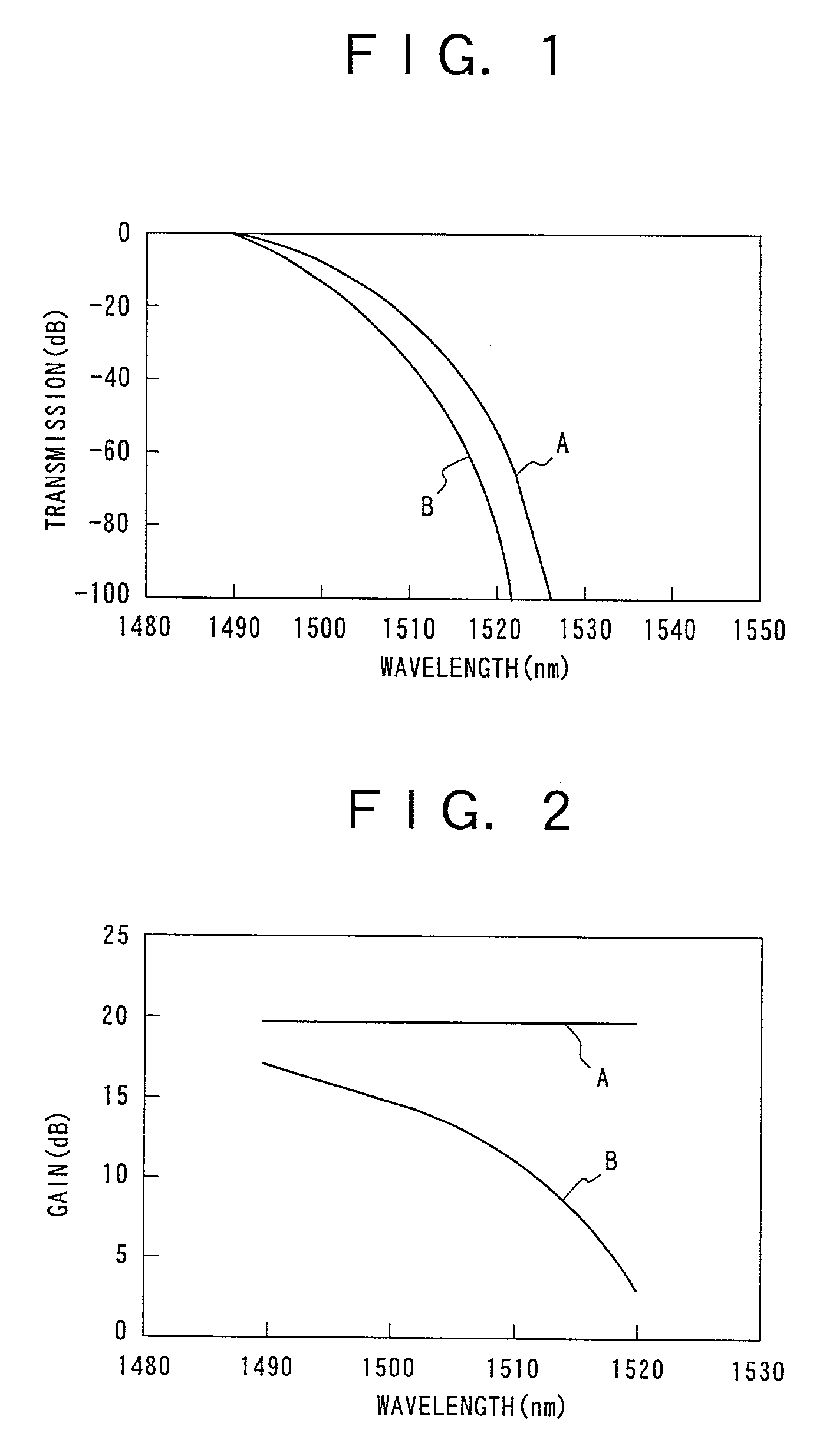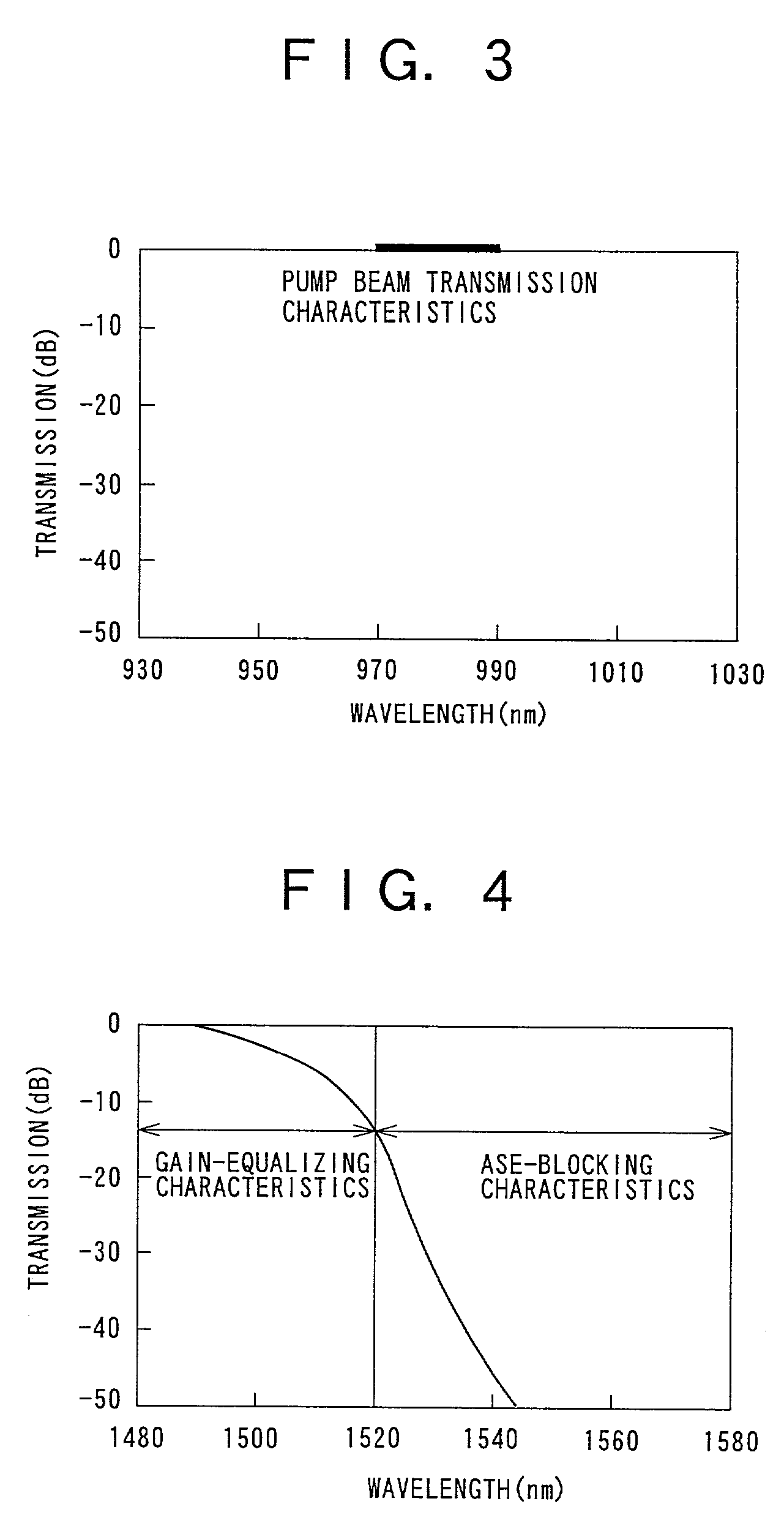Optical amplifier and gain tilt compensation method
a technology of optical amplifier and gain tilt compensation, which is applied in the field of optical amplifier, can solve the problems of limited output power, impaired amplification efficiency, and difficult downsizing, and achieve the effects of reducing increasing the length of erbium-doped fiber, and improving the amplification efficiency of optical amplifier
- Summary
- Abstract
- Description
- Claims
- Application Information
AI Technical Summary
Benefits of technology
Problems solved by technology
Method used
Image
Examples
first embodiment
[1] First Embodiment
[0086]With reference to FIG. 1 through FIG. 31, and FIG. 36 through FIG. 39, a description will be made hereinbelow of an optical amplifier and a method for compensating for gain tilts of the optical amplifier according to a first embodiment of the present invention.
[0087]Referring now to FIG. 7, a description will be made hereinbelow of an optical signal transmission system {wavelength-division multiplexing (WDM) optical signal transmission system} with multiple transmission channels, each of which is equipped with an optical amplifier of the present embodiment.
[0088]As shown in FIG. 7, the system has an end terminal (transmitting unit) (hereinafter called transmitter terminal) 50 on the transmitter side, another end terminal (receiving unit) (hereinafter called receiver terminal) 51 on the receiver side, optical fiber transmission path 52 interconnecting between transmitter terminal 50 and receiver terminal 51, and two or more optical repeater terminals (optica...
second embodiment
[2] Second Embodiment
[0204]Referring now to FIG. 32 through FIG. 35, a description will be made hereinbelow of an optical amplifier and a method for compensating for gain tilts of the optical amplifier according to a second embodiment of the present invention.
[0205]The difference between an optical amplifier of the second embodiment and that of the first embodiment lies in the structure of L-band optical amplifier 56B. More specifically, a common type of EDFA commercially available serves as L-band optical amplifier 56B of the first embodiment, whereas in the second embodiment, L-band optical amplifier 56B has a structure similar to that of the above-described S-band optical amplifier 56C, so that the characteristics of optical filters 2 are optimized in a similar manner to that in S-band optical amplifier 56C.
[0206]Concretely, L-band optical amplifier 56B of the present embodiment is an erbium-doped fiber amplifier (EDFA). As in the case of S-band optical amplifier 56C (see FIG. 11...
PUM
| Property | Measurement | Unit |
|---|---|---|
| wavelengths | aaaaa | aaaaa |
| wavelength gain | aaaaa | aaaaa |
| wavelengths | aaaaa | aaaaa |
Abstract
Description
Claims
Application Information
 Login to View More
Login to View More - R&D
- Intellectual Property
- Life Sciences
- Materials
- Tech Scout
- Unparalleled Data Quality
- Higher Quality Content
- 60% Fewer Hallucinations
Browse by: Latest US Patents, China's latest patents, Technical Efficacy Thesaurus, Application Domain, Technology Topic, Popular Technical Reports.
© 2025 PatSnap. All rights reserved.Legal|Privacy policy|Modern Slavery Act Transparency Statement|Sitemap|About US| Contact US: help@patsnap.com



